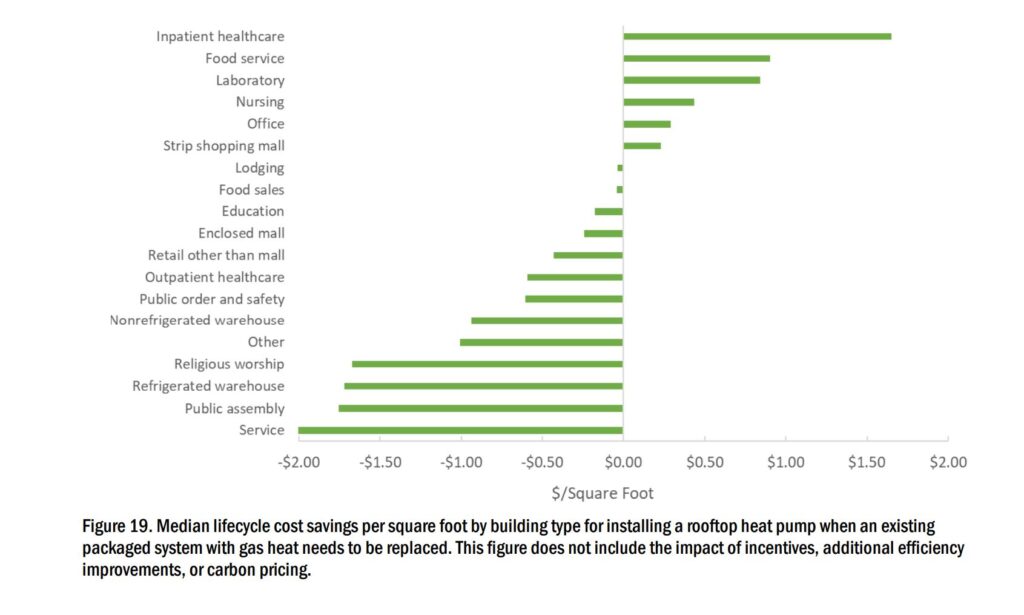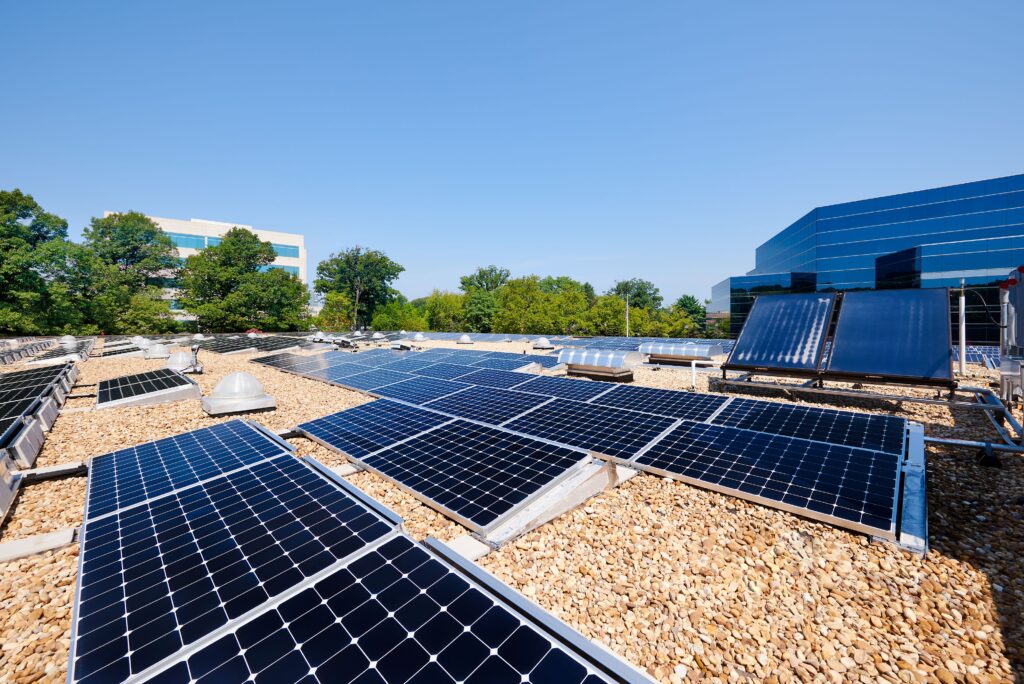As state legislatures and local governments across the country seek options to lower greenhouse gas emissions, the prospect of moving more commercial buildings off fossil fuels and onto electric-powered systems has become a topic of intense debate.
On the one hand, more than 30 local governments in California and others across the country have adopted legislation making it difficult or prohibiting natural gas-powered systems in new commercial buildings. On the other hand, nine states have passed legislation restricting the ability of local governments to pass laws that discriminate against the use of natural gas. While Maryland’s General Assembly failed to pass building energy performance legislation in the 2021 session, major reductions in carbon emissions related to buildings are necessary for Maryland to meet the greenhouse gas reduction targets in existing law. How these reductions will be achieved is the subject of ongoing work by state legislators and consultants this summer which includes evaluation of the feasibility, efficacy and necessity of migrating more commercial properties to electric systems.

In what is described as the first in-depth study on this topic, the American Council for an Energy-Efficient Economy (ACEEE) last year published “Electrifying Space Heating in Existing Commercial Buildings: Opportunities and Challenge.” The report concludes that “27% of commercial floor space heated with fossil fuel systems can be electrified today with a simple payback of less than 10 years and without any rebates or carbon pricing.” It further identifies five categories of commercial buildings that fall within or close to that 10-year payback: inpatient healthcare, laboratory, food service, nursing and office. The report also found considerably faster payback periods in areas of the country that experience milder winters.
“In a scenario that combines energy efficiency investments, electrification incentives and carbon pricing [a $50 per ton carbon fee], the share of floor area that can be electrified with a simple payback of less than 10 years increases to 60%,” the report states.
Initial evaluation by one national REIT indicated a $50 per ton carbon fee would increase energy costs by approximately 30%, suggesting that increased affordability from the carbon fee may be a relative condition that masks other challenges. In many scenarios, government and utility incentives for electrification and energy efficiency measures will be necessary to increase the speed and breadth of building retrofits needed to hit net zero carbon reduction targets set for mid-century.
Steven Nadel, Executive Director of ACEEE and one of the report’s co-authors, stresses that while electrification is a viable option for some existing buildings, it is not the top option overall for lowering the carbon footprint of the commercial real estate sector.
“We believe that energy efficiency measures make a lot of sense for buildings in general. The paybacks almost always are going to be better than electrifying. But they go hand-in-hand,” Nadel said.
Nadel and other experts in building efficiency and sustainability suggest that building owners consider the option of installing an electric heat pump when existing heating/cooling equipment in a building fails. But they also recommend reviewing the building’s energy efficiency at the same time.

“We always recommend, if there is budget, to evaluate options to improve building envelope, such as replacing windows,” said Paula Zimin, Director of Sustainable Building Systems at Steven Winter Associates. “The second thing we would want to focus on is ventilation and is there an opportunity to incorporate an energy recovery ventilator (ERV) or a dedicated outdoor air system.”
Such renovations, Zimin said, could both increase the building’s energy efficiency and lower the size (and cost) of a heat pump needed to adequately condition the space.
In some existing buildings, the most desirable energy retrofit is a hybrid or ‘electric first’ system. For example, a building owner might replace a failing air conditioning system with a heat pump but leave an existing natural gas boiler in place to be used only on exceptionally cold days.
DPR Construction followed that model when it transformed a 20,000-square-foot, Class C office space in Reston, VA into a net zero energy office, said said Zeke Salvo, estimator and DPR Northeast Sustainability Group advocate. A solar thermal system, high-efficiency HVAC and a radiant heating/cooling system handle most conditioning needs and enable the office to make minimal use of an existing natural gas boiler.
“We are seeing a lot more clients choose an electric-first design with natural gas backup,” said Salvo who estimates that nearly one-quarter of his construction projects now follow that model.
In addition to lowering a building’s carbon footprint, the model is attractive to “market sectors that really value redundancy,” such as data centers, technology and life sciences industries, healthcare facilities, financial institutions and Class A buildings, he said. Increasingly, those clients are also opting to install rooftop solar systems to also improve energy resiliency.
The feasibility of retrofits varies significantly from building to building. Zimin, who has researched and assisted with numerous projects that involved electrification, said buildings of 100,000 square feet or less with relatively simple HVAC systems typically are the best candidates. Large, Class A buildings with high-demand users – such as life science tenants, data centers and cafeterias – pose greater challenges to a feasible electrification retrofit.
“New construction is certainly the easiest thing to electrify,” Zimin said. “There is very little cost difference [from traditional systems] and sometimes a small cost savings to do an electric building.”
Project teams, however, need to involve construction managers, mechanical contractors and other experts in building performance early in the design phase to ensure such projects ultimately meet the client’s vision and budget, Salvo said.